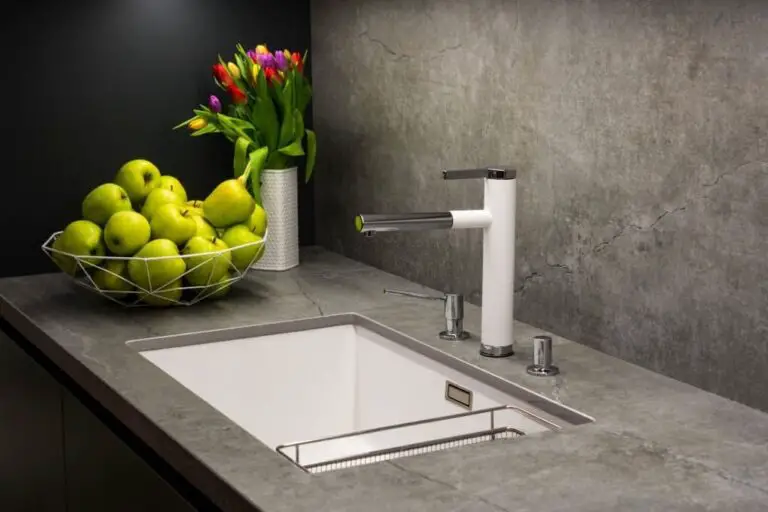15 Different Types Of Septic Systems: Which One Is Right For You?
When considering the installation of a new septic system, it’s crucial to understand the various types available. Each type has its unique benefits and drawbacks, making informed decision-making essential. This article will delve into the pros and cons of different systems, enabling you to make a well-rounded choice that suits your specific needs. With this comprehensive guide, you’ll gain insight into the working mechanisms, costs, and longevity of septic systems.
From Aerobic Treatment Units to Constructed Wetland Systems, we’ll cover 15 distinct types, including some alternative options. Additionally, we’ll address frequently asked questions and provide valuable tips on installation and maintenance.
What is a septic system?
A septic system is a self-sustaining, underground infrastructure designed to treat wastewater in areas without access to central sewer connections. This type of system is commonly found in residential and commercial properties that aren’t connected to a municipal sewage network.
Wastewater from various sources such as toilets, showers, sinks, and washing machines flows into the septic tank, typically constructed from materials like concrete, fiberglass, or plastic and situated underground.
Within the tank, microorganisms break down the wastewater, resulting in the formation of sludge and effluent.
The treated wastewater then passes through a perforated pipe buried beneath the soil. As it percolates downward, the water either seeps into the groundwater or evaporates into the atmosphere.
How does a septic system work?
Septic systems play a crucial role in treating and disposing of wastewater from homes not connected to municipal sewer systems. Wastewater from various sources, including toilets, showers, sinks, and washing machines, flows into the septic tank. The septic tank is typically made of concrete, fiberglass, or plastic and serves as a watertight chamber where bacteria break down the wastewater.
Once treated in the septic tank, the wastewater flows into the leach field, a series of trenches filled with gravel that allows for further treatment and infiltration into the soil. There are three primary types of septic systems: conventional, alternative, and advanced. Each type has its unique characteristics, advantages, and disadvantages, making it essential to select the right one for your home. Conventional septic systems are the most prevalent type, comprising a tank and leach field.
Wastewater from homes flows into the tank, where bacteria treatment occurs, followed by filtration through the soil in the leach field. Alternative septic systems cater to homes with limited space or poor soil conditions, featuring different types such as aerobic, anaerobic, and graywater systems. Each alternative system has its own set of benefits and drawbacks, emphasizing the importance of selection based on individual circumstances.
Advanced septic systems are designed for high-strength wastewater, common in homes with large families or businesses. These systems employ a tank divided into two compartments: the first compartment treats the wastewater, which then flows through a filter before entering the second compartment featuring an effluent pump that pumps the treated wastewater to the septic field.
What is the most common septic system?
The conventional septic system is the most widely used type. It comprises two primary components: a tank and a drain field. The tank, typically constructed from concrete, fiberglass, or plastic, serves as a holding area for sewage generated by the home until natural decomposition occurs, facilitated by bacterial action. Once treated, the effluent flows through the drain field, where it undergoes filtration and absorption into the surrounding soil.
Although this system tends to be less expensive to install, its maintenance can be more challenging, and its performance may be impaired in cold climates. Furthermore, the drain field has limitations in terms of wastewater capacity, as excessive overload can compromise its effectiveness.
What is the most expensive septic system?
The cost of a septic system can’t be pinned down to a single figure. Instead, it depends on several factors, including the size of your home and the type of soil you have. Generally speaking, traditional septic systems with leach fields tend to be more expensive than aerobic treatment units (ATUs). However, if your property features a steep slope, an ATU might require more extensive excavation and installation, driving up the cost.
In cases where homes generate a significant amount of wastewater or soil conditions aren’t suitable for a leach field, an ATU could prove to be the most effective solution.
Different Types Of Septic Systems
Aerobic Treatment Unit (ATU)

Aerobic Treatment Units (ATUs) are the most widely used type of septic system. They rely on oxygen to decompose wastewater into a harmless form, comprising water and other substances. This technology is often employed in areas with high water tables or where soil absorption capacity is limited. On the plus side, ATUs tend to be less prone to failure compared to other septic systems, and they excel at treating sewage effectively.
However, there are some drawbacks to consider: these units require more upkeep than their counterparts, which can be a significant burden for homeowners. Additionally, installing and operating an ATU is typically more costly than alternative options.
Pit and Pipe System
While traditional pit and pipe systems may seem like a relic of the past, they still have their advantages. For one, installation costs are relatively low, making them an accessible option for many households. Additionally, these systems are straightforward to operate and maintain, with no need for electricity or complex machinery. However, it’s essential to acknowledge some significant drawbacks.
If not properly maintained, a pit and pipe system can contaminate groundwater, posing environmental risks. Furthermore, neglecting maintenance can lead to health hazards. Lastly, areas with high water tables may not be suitable for this type of sewage management. Despite these limitations, the simplicity and cost-effectiveness of pit and pipe systems mean they still have a place in modern waste management.
Anaerobic septic system
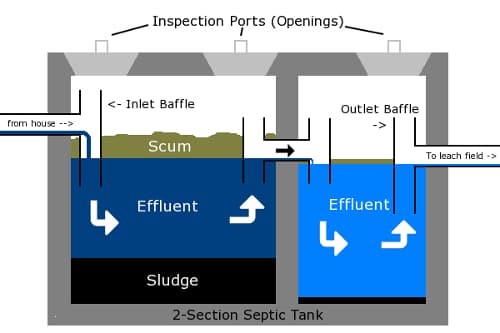
Anaerobic septic systems operate without relying on oxygen, instead leveraging the power of bacteria to decompose wastewater. This unique approach offers several advantages and disadvantages. On the plus side, anaerobic septic systems tend to be more resilient and less prone to failure compared to other types. Installation costs are also relatively low, and the system doesn’t require any electricity, making it a suitable option for off-grid properties or areas with limited power infrastructure.
However, anaerobic septic systems come with their own set of challenges. Maintenance can be more labor-intensive and complex compared to other systems, which may not appeal to homeowners looking for a low-maintenance solution. Additionally, the process can generate unpleasant odors, potentially causing discomfort for nearby residents or neighbors.
Furthermore, anaerobic septic systems might not be the most suitable choice for areas with high water tables, as they rely on specific conditions to function effectively.
Chamber System
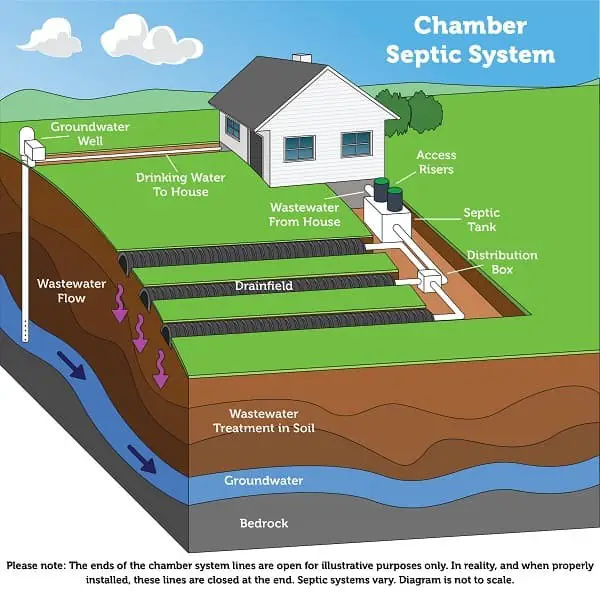
The chamber septic system employs a sequential treatment process, utilizing multiple compartments to break down and purify wastewater. In the first stage, organic matter is decomposed, followed by water clarification in the subsequent compartment. The treated effluent then flows into the soil absorption area for final disposal.
Notable advantages of this system include its relatively straightforward installation and moderate upfront costs.
Moreover, it has proven effective in treating sewage to a satisfactory standard.
However, the chamber septic system also presents some drawbacks. Treatment can be slow and laborious, which may necessitate additional infrastructure or maintenance. Furthermore, regular upkeep may prove challenging due to the complexity of the system’s components.
Cluster or Community System
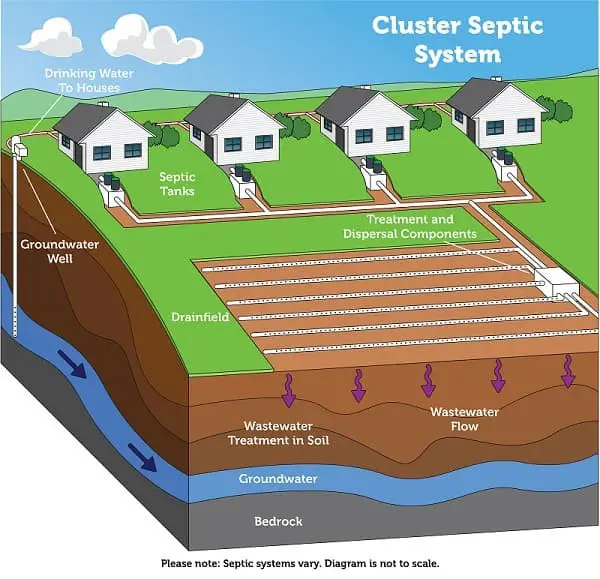
In areas where multiple residences are situated close together, a cluster or community septic system is often employed. This type of system aggregates and treats sewage from each dwelling in a single, centralized facility.
The advantages of this setup include significant cost savings, as individual homeowners do not need to install their own septic systems. Additionally, professional treatment ensures the effluent meets strict environmental standards.
However, there are also some drawbacks to consider. For instance, if the central treatment plant were to experience a failure or malfunction, it could impact all homes within the community. Furthermore, homeowners must share the costs of maintenance and upkeep with their neighbors, which can be a significant financial burden.
Constructed Wetland System
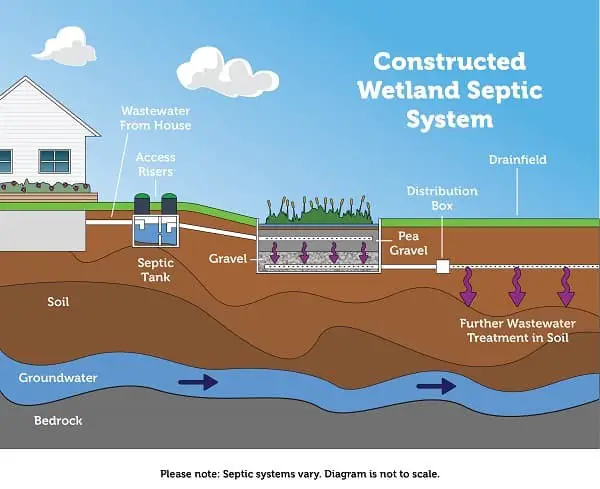
A constructed wetland system is an innovative type of septic system that harnesses the natural processes of wetlands to treat wastewater. Wetlands, characterized by soil or plant coverage year-round or for extended periods, can be either man-made or naturally occurring. At the heart of these systems lies the remarkable ability of wetland plants to remove pollutants from the water. The constructed wetland area is typically divided into two distinct sections: an inlet zone and an outlet zone.
Wastewater enters the inlet section, where it undergoes treatment courtesy of the plants. The treated wastewater then flows through the outlet section before exiting the wetland and entering a drainage system or septic tank. This technology offers several advantages, including its suitability for areas with high water tables or shallow soils, its capacity to treat a broad range of pollutants, minimal maintenance requirements, and cost-effectiveness.
However, constructed wetlands also present some limitations, such as the need for significant space allocation, the time-consuming process of construction, and other considerations.
Conventional System

Conventional septic systems are the most widely used type, consisting of a storage tank and a drainage field. The tank serves as a holding area for wastewater, allowing natural processes to break down organic matter. Meanwhile, the drainage field enables treated effluent to percolate back into the soil. While this setup has its advantages, it also has some drawbacks.
On the plus side, conventional septic systems are relatively affordable to install and maintain, making them a cost-effective option for many homeowners. They can also handle significant volumes of wastewater, which is essential for large families or businesses that generate a high amount of sewage.
However, this system has some limitations. It’s not as efficient as other options on the market, which can lead to issues with system failure and costly repairs or replacements.
If the tank fails, the consequences can be severe, requiring significant investments to restore functionality.
Drain Field and Piping System:
The most prevalent type of septic system is the drain field and piping setup. This system relies on a perforated pipe laid in a gravel-filled trench, which ensures a consistent distribution of effluent into the surrounding soil. The natural filtering abilities of the earth then eliminate contaminants and break down waste effectively.
However, this type of system has its limitations – it’s only suitable for properties with level ground, as any inclines can lead to the accumulation of effluent and create an environment conducive to mosquito breeding.
The benefits of this setup include cost-effectiveness and ease of installation and maintenance.
Nevertheless, there are some drawbacks to consider: the piping can become clogged over time, potentially causing the system to fail, and it’s only feasible for properties with level terrain.
Drip Distribution System
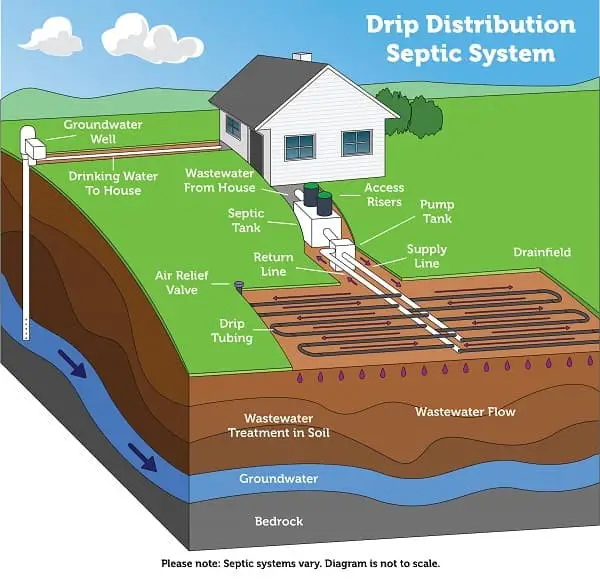
The most common type of septic system is the leach field or leaching bed, which relies on perforated pipes buried in gravel-filled trenches. As wastewater from the septic tank trickles through the gravel and into the soil, it gradually percolates down to the water table. This system has its advantages, including simplicity and cost-effectiveness during installation, as well as low maintenance requirements. It’s also adaptable to various soil types.
However, drip distribution systems do have their drawbacks. They require a significant amount of land, making them less suitable for densely populated areas or properties with limited space. Furthermore, tree roots or other objects that infiltrate the trenches can cause damage. Additionally, this system isn’t ideal for areas with high water tables or shallow soils, as it may not be effective in these conditions.
Evapotranspiration System

An evapotranspiration system, also known as an ET system, leverages the natural processes of evaporation and transpiration to treat wastewater. This eco-friendly solution relies on abundant sunshine and water supply. In a typical setup, wastewater is collected in a tank where it’s treated with beneficial bacteria, before being released into the environment through a network of perforated pipes.
ET systems boast several advantages, including simplicity and affordability during installation, minimal maintenance demands, and impressive wastewater treatment efficacy.
However, their effectiveness is contingent upon sufficient sunlight and water availability. Moreover, operating an ET system in cold weather climates can be challenging.
Low-pressure septic system
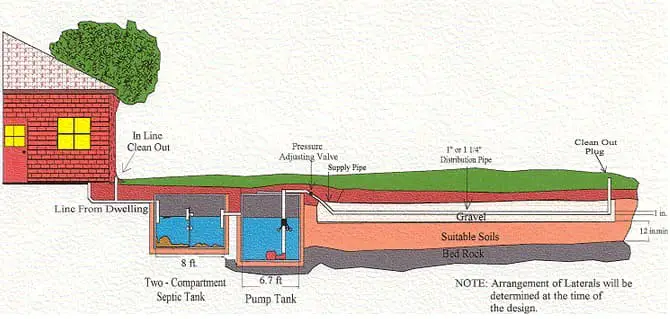
For homeowners struggling with limited outdoor space, a low-pressure septic system presents an attractive solution. Unlike traditional systems that require large tanks, this type of setup leverages a pump to efficiently distribute effluent from the distribution box to the leach field. While it may not be the most budget-friendly option, its compact design and adaptability for areas with high water tables make it an appealing choice for those with spatial constraints.
Mound Systems
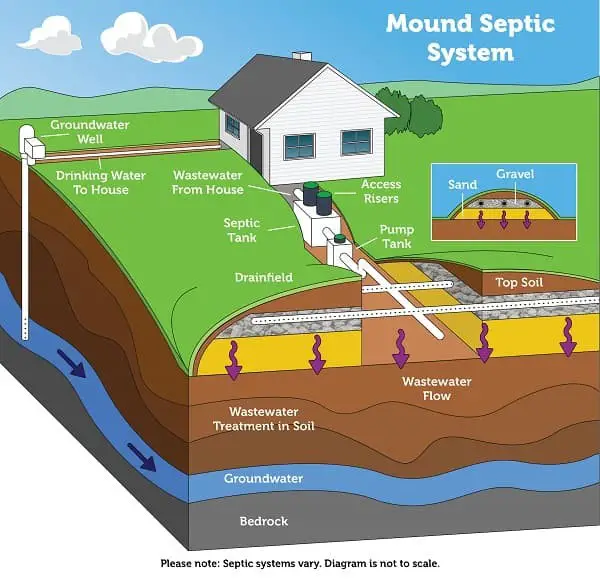
Mound systems offer an alternative solution when traditional septic system installation is not feasible. This type of setup involves excavating and adding fill material to create a raised absorption field that sits above the water table or bedrock, making it suitable for areas with poor soil conditions or limited space. One of the primary advantages of mound systems is their adaptability to challenging environments.
Additionally, they can be designed to be visually appealing, blending seamlessly into the surrounding landscape.
While mound systems provide a reliable solution for wastewater disposal, there are some drawbacks to consider. The most significant disadvantage is the higher upfront cost compared to traditional septic systems. Furthermore, mound systems typically require more frequent maintenance and upkeep to ensure optimal performance.
Pond Systems
Pond-based septic systems are often implemented in rural areas where a reliable water supply is available. In this setup, an excavation creates a pond that accommodates the absorption field, while effluent from the septic tank is dispersed into the pond, allowing natural treatment by microorganisms.
This type of system offers several benefits: for instance, it’s generally more cost-effective to install compared to other types of septic systems; the dispersed effluent minimizes pollution risks due to its widespread distribution; and the overall design can be quite visually appealing.
Nevertheless, pond-based systems also come with some drawbacks: they typically require a substantial amount of land; may attract unwanted insects like mosquitoes; and could potentially harbor harmful microorganisms or viruses.
Recirculating Sand Filter System
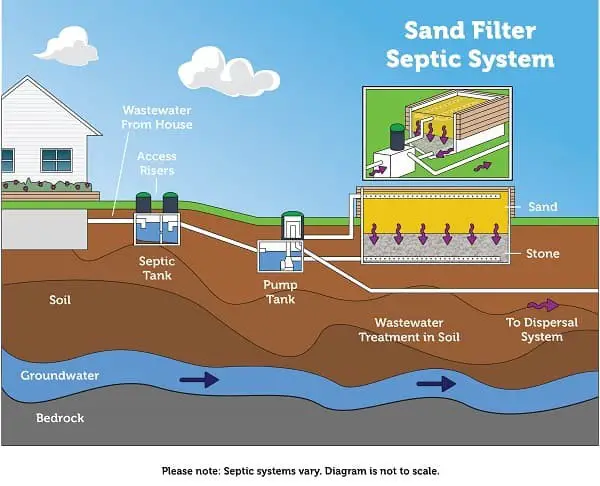
In areas where water tables are high or soils are shallow, recirculating sand filters (RSF) have become a popular choice for wastewater management. This system employs a clever design that leverages the natural filtration capabilities of sand to remove contaminants from effluent. Here’s how it works: a pump circulates the effluent through a bed of sand, which effectively captures a significant portion of impurities before the treated water flows back into the septic tank.
The benefits of RSF systems are twofold. Firstly, they demand less maintenance compared to other types of systems. Secondly, the sand bed is capable of filtering out a substantial percentage of contaminants, making it an effective solution for wastewater treatment. However, there are some drawbacks to consider. Installation costs can be higher than those of other systems, and the pump may require more frequent replacement.
Septic Tank and Leach Field System
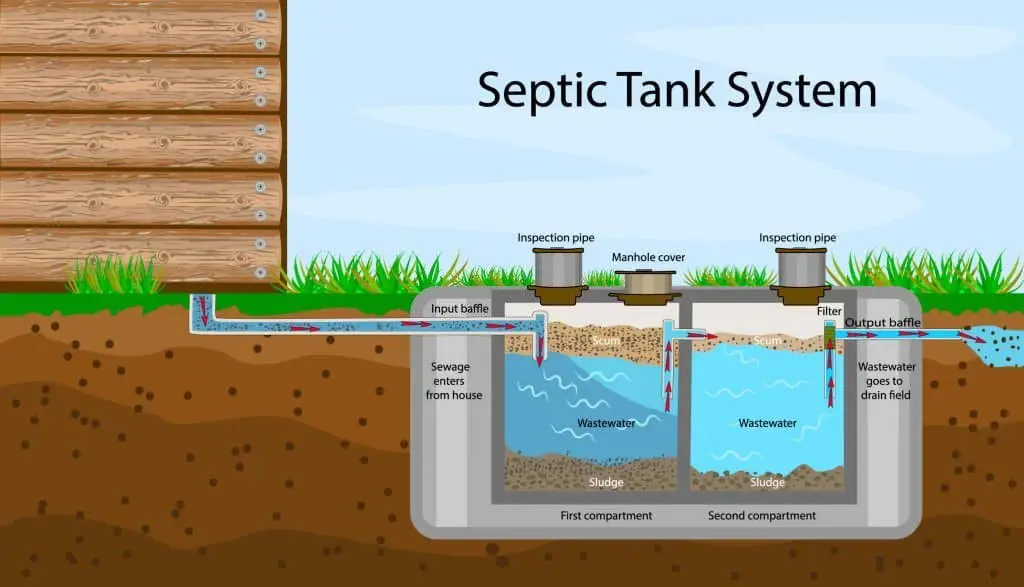
The most widespread type of septic system is one that utilizes a combination of a septic tank and a leach field. The septic tank acts as a holding area for wastewater generated by the home, while the leach field disperses this wastewater over a vast expanse of soil. As the wastewater flows through the soil, contaminants are filtered out and it gradually seeps into the ground. This natural process allows for the safe and efficient disposal of wastewater.
The advantages of this system include its relatively low installation cost, ease of maintenance, and ability to handle a significant volume of wastewater. However, there are also some potential drawbacks to consider. If the leach field becomes clogged or compromised in any way, the entire system may malfunction. Additionally, the soil must be able to absorb water without becoming saturated or flooded, as this can lead to serious issues.
Alternative Systems:
In modern wastewater management, two primary methods are employed to transport effluent from septic tanks: the Effluent Pumping System and the Pneumatic System. The former relies on pumps to facilitate the movement of effluent from the septic tank to a distribution box or field line. In contrast, the latter harnesses air pressure to achieve the same goal, showcasing a unique approach to wastewater disposal.
FAQs
Can you have a septic tank without a leach field?
While it’s possible to have a septic tank without a traditional leach field, there are alternative solutions available. If the soil conditions aren’t conducive for a leach field or if you don’t have the necessary space, you can consider installing an alternate absorption system like a mound system or sandfilter. These systems provide a similar function to a leach field, but with some key differences.
For example, mound systems require a specific mound design and may not be suitable for every situation. In any case, it’s crucial to consult with your local health department to determine if these alternative solutions are permitted in your area and comply with local regulations.
How much does a septic system cost?
Septic systems can be an effective solution for managing wastewater in your home, but what’s the price tag? A standard gravity-fed septic system typically costs between $4,000 and $6,000, depending on your home’s size. More complex homes with added features might require a bigger investment, up to $8,000 or more. On the maintenance front, pumping services usually range from $50 to $150 per visit, influenced by tank size and frequency of pumping.
If you’re using a garbage disposal, be prepared for more frequent pumpings, as it increases solids in your tank. Interestingly, homeowners on municipal sewer systems might qualify for grants from their local government to help offset the cost of installing a new septic system. It’s essential to check with your municipality before commencing any work.
How long does a septic tank last?
While the typical lifespan of a septic tank ranges from 20 to 40 years, actual longevity depends on several factors. The type of system in place plays a significant role, as do the quality of installation and ongoing maintenance efforts. Factors such as proper pumping schedules, regular inspections, and prompt repairs can significantly impact the overall performance and lifespan of your septic tank.
Does shower water go into septic tank?
When it comes to understanding where shower water flows, many homeowners are left with more questions than answers. The truth is that most of the time, shower water doesn’t make its way into the septic tank. Yet, there are certain scenarios where this might not be the case. For instance, if you reside in a larger home with multiple bathrooms and showers, it’s possible for your shower water to ultimately find its way into the septic tank.
In such instances, having a more extensive septic tank installed becomes necessary to accommodate the increased water volume.
How to install a septic system
To install a septic system, follow these straightforward steps. First, identify a suitable location for the system, ensuring it’s downhill from your house and at least 12 feet away from any bodies of water. Mark the spot with a shovel before proceeding. Next, dig a hole that’s at least 12 feet deep and 18 feet wide, taking care not to exceed these dimensions if you need to accommodate the septic tank. Once the hole is dug, backfill it with soil while compacting it well to prevent settling.
The next step involves installing the septic tank itself, which may require professional assistance due to its complexity. Ensure the tank is level and situated on firm ground before moving forward. Connect a perforated pipe from the septic tank to the drain field, sloping it downhill and burying it at least 18 inches below the surface. This critical component helps distribute wastewater evenly throughout the system.
Once these steps are complete, cover the tank and pipe with a layer of topsoil before seeding the surrounding area with grass or other ground cover to promote lush growth. Finally, maintain your new septic system by having it pumped every few years to prevent overflowing and ensure efficient operation. With proper care and installation, your septic system will provide reliable wastewater disposal for years to come.
How to maintain a septic system
To ensure the smooth operation of your home’s septic system, regular maintenance is crucial. Here’s how you can properly care for your system: Inspect your septic tank regularly for signs of damage or leaks, and check that the baffles inside are intact. Pump out your tank every three to five years to remove built-up sludge, which can impede proper functioning. Avoid flushing harsh chemicals or cleaners down drains, as these can harm beneficial bacteria that break down waste.
Dispose of grease and oil properly, as they can clog your septic system over time. Additionally, if you have a water softener, be mindful of excessive salt use, as it too can harm your septic tank. By following these simple guidelines, you’ll be able to enjoy a worry-free septic system for years to come.
Conclusion
Septic systems are a crucial aspect of modern living. While there are various types of septic systems, each with its distinct advantages and disadvantages, selecting the appropriate one for your residence is vital. Proper maintenance is also essential to ensure the longevity of your chosen system. In reality, a well-functioning septic system can provide years of reliable service if properly cared for.
As you continue to learn more about septic systems, it’s important to keep in mind that proper care and selection are key factors in achieving optimal performance.
Related Posts
To kickstart a rewarding career as a plumber, it’s essential to understand the ins and outs of the trade. With a strong foundation in home maintenance tips, you’ll be well-equipped to tackle everyday plumbing issues. In addition, having knowledge on how to properly deal with water and flood damage will give you an edge when handling complex situations.
Furthermore, understanding septic tank cleaning processes in areas like Mishawaka IN will provide valuable insights for those seeking professional assistance. For instance, knowing the importance of proper septic maintenance can help homeowners avoid costly repairs down the line. As a plumber, it’s crucial to have a solid grasp on how water damage occurs and how to effectively handle such situations.
This includes understanding the power of hydro jetting and its numerous benefits for home plumbing systems. Moreover, having a comprehensive plumbing guide tailored to local areas like Brisbane can provide homeowners with valuable insights for maintaining their property.




